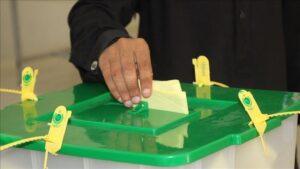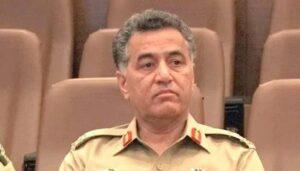Vaccination teams reach 7.07 million children in KP, but polio workers face new wave of attacks
KHYBER PAKHTUNKHWA/ PESHAWAR:
Pakistan continues to face a critical juncture in its decades-long battle against one of the world’s most preventable diseases. New data from the National Immunization Days (NID) held in October 2025 in Khyber-Pakhtunkhwa (KP) offers both hope and warning: while the province achieved an impressive 99% vaccination coverage, the few children left unvaccinated still pose a serious threat to the goal of polio-free Pakistan.
According to official figures, vaccination teams reached 7.07 million children out of a target of 7.15 million, leaving only 1% unvaccinated and refusals reduced to just 0.3% across the province.
Districts such as Batagram, Mansehra, Torghar, Kohistan and Buner reported 100% coverage, a testament to the dedication of frontline health workers who continue to provide services in difficult and often dangerous conditions. However, behind these encouraging statistics lies one of Pakistan’s toughest public health battles: a fight not only against a virus but also against mistrust, misinformation, inaccessibility and violence.
Khyber-Pakhtunkhwa, once the epicenter of poliovirus transmission, remains the most difficult province due to its unique combination of security threats, population movements and deep-seated misconceptions about vaccination.
This year, polio workers and security personnel have faced a new wave of attacks, making 2025 one of the most dangerous years for those on the frontlines. In several districts, especially in southern North Korea and tribal areas, vaccination teams and police escorts came under attack, disrupting campaigns and forcing temporary suspensions. Despite the threats, health workers continued their door-to-door efforts, often risking their lives to reach every home.
Read: Sindh warns of 20,000 polio cases if campaign fails
KP Emergency Operations Center (EOC) officials said that while near-universal coverage has been achieved, some children, particularly in Bannu, Dera Ismail Khan and Karak, remain “not yet available” (NA) due to migration, insecurity or rejection. The latest data shows that there are 84,572 children in this category, mainly from hard-to-reach and high-risk areas where displacement, poor roads and ongoing counter-terrorism operations make access difficult.
Over the past decade, Pakistan has made significant progress in reducing polio cases. In 2014, the country recorded more than 300 cases, the highest number in the world. By 2024, that number had dropped to single digits. However, complete eradication remains elusive, hampered by insecurity, vaccine hesitancy and continued cross-border movement between Pakistan and Afghanistan, the only two countries in the world where polio is endemic.
Misinformation remains one of the biggest barriers. Despite years of awareness campaigns, some families still believe false rumors that the vaccine causes infertility or that repeated doses are unnecessary. In conservative communities, these misconceptions are often amplified by social media and religious misinterpretations, creating pockets of resistance that health teams must address patiently, door to door.
However, NID data from October 2025 shows a sharp decrease in refusals: only 0.3% of parents refused vaccination, compared to more than 2% in previous years. Districts such as Torghar, Chitral Upper and Kohistan did not report any rejection, reflecting growing public confidence. Health officials attribute this improvement to sustained communications efforts, engagement with local clergy and the perseverance of community health workers, whose personal outreach has helped change perceptions in conservative areas.
But the challenge is far from over. Polio remains a moving target, both literally and figuratively. Migrant families, seasonal workers, nomadic tribes and refugees frequently move between districts or cross the Afghan border, creating gaps in coverage that the virus can exploit. Even a single lost child, experts warn, can reignite transmission.
Read more: How to eradicate polio?
Despite these obstacles, KP’s near 99% coverage is a notable achievement. Districts like Peshawar, Swat, Mardan and Bajaur recorded good results, vaccinating almost all the target children. In Peshawar alone, more than 869,000 children were immunized, a dramatic turnaround for a city once labeled a “polio reservoir.” Officials credit the province’s “missing child mapping system” and real-time monitoring for improving accountability and quality of campaigns.
Health experts say the final stage of eradication is always the most difficult.
“Pakistan has reached a point where the virus survives only in the smallest cracks: the last missing children, the last unsafe neighborhoods,” said a senior COE official in Peshawar. “But if we lose focus now, the virus will exploit those cracks and come back.”

KP’s data sends a powerful message: Pakistan has the tools, commitment and public will to end polio, but it must maintain its momentum. The safety of healthcare workers must remain a top priority, misinformation must continue to be countered through community trust, and border coordination with Afghanistan must be strengthened to prevent the virus from circulating.
As the country moves closer than ever to eradicating poliovirus, the sacrifices of frontline workers – many of whom have lost their lives – serve as a reminder that eradication is not just a health goal but a national mission.
The path to a polio-free Pakistan is in sight, but it will require unwavering political commitment, community cooperation, and continued protection for those who bring the vaccine door-to-door.



